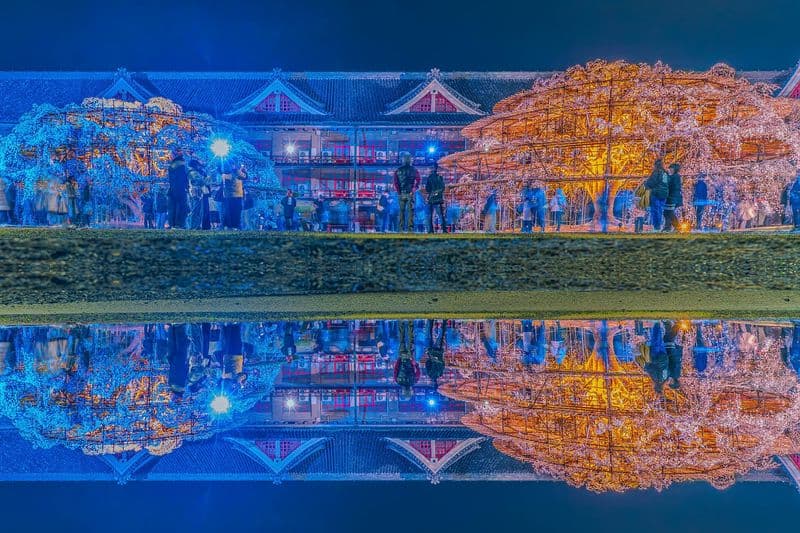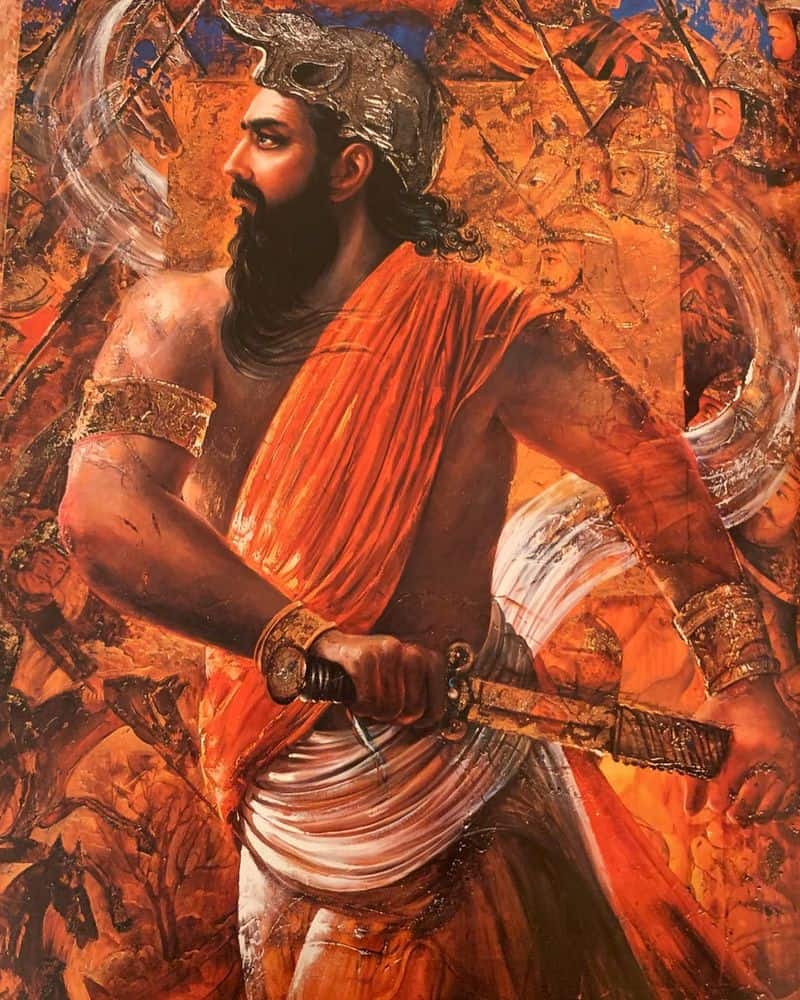Humans have always found fascinating ways to make sense of our existence, leading to an incredible diversity of religious beliefs.
Beyond mainstream faiths like Christianity, Islam, and Buddhism, there exists a colorful tapestry of lesser-known spiritual traditions.
These unique religions range from ancient practices revived in modern times to entirely new belief systems founded just decades ago.
Get ready for a mind-expanding journey through some of the world’s most unusual religious communities!
1. Church of Maradona: Worshipping the Soccer God

Soccer fanaticism reaches divine proportions in Argentina’s Iglesia Maradoniana (Church of Maradona). Established in 1998, this religion venerates legendary footballer Diego Maradona as their actual deity, with over 100,000 members worldwide claiming he’s literally God.
Followers celebrate Christmas on Maradona’s birthday (October 30) and count years from his birth in 1960 (it’s currently year 64 D.D. – ‘Después de Diego’). Their version of the Lord’s Prayer begins: ‘Our Diego, who art on Earth, hallowed be thy left foot.’
Church members must name their sons Diego and must have watched Maradona’s famous ‘Hand of God’ goal against England. Talk about taking sports hero worship to a whole new level!
2. Jediism: May the Force Be With Your Faith

What started as a census joke in 2001 has evolved into a genuine spiritual movement. Jediism takes the fictional Force from Star Wars and transforms it into a real-life philosophical framework embraced by thousands worldwide.
Practitioners aren’t lightsaber-wielding cosplayers (well, most aren’t). They meditate on the balance between light and dark energies while following the Jedi Code’s principles of peace, knowledge, and harmony. The UK officially recognized Jediism as a religion in 2013, though tax-exempt status remains elusive.
Fun fact: In 2001, over 390,000 people in England and Wales listed ‘Jedi’ as their religion, making it temporarily the country’s fourth-largest faith. George Lucas has never officially endorsed the movement.
3. Pastafarianism: Touched by His Noodly Appendage

Created in 2005 to protest teaching intelligent design in schools, the Church of the Flying Spaghetti Monster has evolved into a satirical religion with surprising staying power. Pastafarians worship a deity made of spaghetti and meatballs who created the universe after drinking heavily.
Their holy text, ‘The Gospel of the Flying Spaghetti Monster,’ explains that global warming is caused by declining pirate populations. Heaven includes a beer volcano and stripper factory. Adherents wear colanders as religious headgear in official ID photos, fighting legal battles for this right.
Despite its humorous origins, Pastafarianism makes serious points about religious freedom and separation of church and state. Several countries now recognize colander-wearing as protected religious expression!
4. Ásatrú: Thor and Odin’s Modern Comeback

Mjölnir pendants and Viking aesthetics aren’t just for Marvel fans! Ásatrú revives ancient Norse paganism for the modern era, honoring gods like Thor, Odin, and Freyja through seasonal rituals called blóts.
Iceland officially recognized this faith in 1973, and it’s now the country’s fastest-growing religion. Practitioners gather around bonfires to share mead from ceremonial horns while reciting ancient sagas. Unlike their ancestors, today’s followers have replaced animal sacrifice with symbolic offerings of food and drink.
Contemporary Ásatrú communities strongly reject the white supremacist groups who have misappropriated Norse symbols. Most adherents embrace inclusive values while connecting to their ancestral roots through nature-centered spirituality. Their temples, called hofs, are architectural marvels blending ancient and modern design.
5. Dudeism: Taking It Easy as a Spiritual Path

Based on the laid-back philosophy of ‘The Dude’ from the Coen Brothers’ film ‘The Big Lebowski,’ Dudeism preaches the gospel of chilling out in our high-stress world. Founded in 2005 by journalist Oliver Benjamin, it claims over 450,000 ordained ‘Dudeist Priests’ worldwide.
Adherents follow the sacred principle of ‘taking it easy’ while sipping White Russians and avoiding being ‘uptight.’ Their holy book, ‘The Dude De Ching,’ reimagines ancient Taoist wisdom through the lens of The Dude’s slacker philosophy.
Despite its humorous origins, many followers find genuine comfort in Dudeism’s teachings about embracing life’s absurdities with calm acceptance. Annual festivals called ‘Lebowski Fests’ serve as pilgrimages where the faithful don bathrobes, bowl, and abide together.
6. Yazidism: The Misunderstood Peacock Angel Faith

Often tragically misunderstood, Yazidism is an ancient Kurdish religion with approximately 700,000 followers. At its center stands Melek Taus, the Peacock Angel, who refused to bow to Adam despite God’s command – not out of pride but from devotion to God alone.
This refusal mirrors Satan’s story in Abrahamic traditions, leading to centuries of persecution from those who mistakenly label Yazidis as ‘devil worshippers.’ In reality, Yazidism forbids even saying the word ‘Satan’ or wearing the color blue.
Yazidis believe they descended directly from Adam alone (not Eve) and cannot convert to or from their faith – you must be born Yazidi. Their most sacred site is Lalish temple in northern Iraq, where practitioners remove their shoes before entering and tie special knots in sacred cloths.
7. Prince Philip Movement: The Divine Duke of Edinburgh

On the remote Pacific island of Tanna in Vanuatu, thousands of villagers worship Britain’s late Prince Philip as a divine being. This cargo cult began after islanders observed the respect shown to Queen Elizabeth during colonial visits in the 1960s.
According to their belief, Prince Philip was the pale-skinned son of a mountain spirit who traveled overseas to marry a powerful woman. He would eventually return to their island, bringing prosperity. The Duke actually embraced this unusual role, sending signed photographs to his followers and even meeting village representatives who traveled to Buckingham Palace.
After Philip’s death in 2021, followers entered a period of ritualistic mourning, believing his spirit has returned to its original island home. They continue their devotion by displaying his portraits in special shrines decorated with British flags.
8. Discordianism: Chaos Worship with a Wink

Founded in a bowling alley in 1963 by two California teenagers, Discordianism celebrates Eris, the Greek goddess of chaos, with a blend of absurdist philosophy and elaborate pranks. Their sacred text, ‘Principia Discordia,’ instructs followers to ‘worship’ disorder while rejecting dogmatic thinking.
Discordians combat the ‘Aneristic Illusion’ (that order is real) by spreading ‘Operation Mindf***’ – creative mischief designed to shake people from rigid thought patterns. They claim hot dogs are sacred, Fridays are reserved for eating only hot dog buns, and the number 5 holds mystical significance.
Despite seeming like pure nonsense, Discordianism contains genuine philosophical depth about cognitive liberty. Famous adherents included counterculture writer Robert Anton Wilson and Kerry Thornley, who later became entangled in JFK assassination conspiracy theories.
9. Tenrikyo: The Divine Parent’s Joyful Dance

Born in 19th century Japan, Tenrikyo centers around the belief that humans are literally ‘borrowed’ bodies from God, who they call ‘Oyagami’ or the Parent God. Followers perform a distinctive sacred dance called the Teodori, believing it brings divine joy and healing.
What makes Tenrikyo stand out is its optimistic worldview – illness and misfortune aren’t punishment but opportunities to reflect and grow spiritually. The faith teaches that humans were created to live joyfully!
Unlike many religions, Tenrikyo has no concept of original sin. Instead, practitioners focus on purifying the mind of ‘dust’ – selfish thoughts that cloud our divine purpose of bringing happiness to others.
10. Zoroastrianism: The Ancient Flame Keepers

Predating both Christianity and Islam, Zoroastrianism might be humanity’s first monotheistic faith. Founded by the prophet Zoroaster in ancient Persia around 1500 BCE, its followers worship Ahura Mazda, the wise lord, through sacred eternal flames that symbolize divine light and wisdom.
Fire temples house these perpetually burning flames – some reportedly alight for over 1,500 years! The religion’s core philosophy revolves around ‘Good Thoughts, Good Words, Good Deeds,’ emphasizing personal responsibility in the cosmic battle between truth and falsehood.
Zoroastrians practice unique funeral customs, placing deceased loved ones in ‘Towers of Silence’ where vultures consume the body, returning it to nature without polluting sacred elements of earth or fire.

